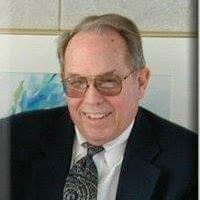A writer once asked, “What is the best way to grow my email list with the right readers?” The question carried more weight than it seemed. Beneath it pulsed the heartbeat of every author’s fear—that the words they poured themselves into would drift unseen, unread, and unremembered.
The urge to gather readers often sparks frantic sprints toward quick fixes—lead magnets dangled like bait, giveaways flashing like neon signs, collaborations stitched together more from urgency than care. These can work, but only when they rise from something sturdier than desperation. A list, after all, is not a scoreboard. It’s a circle of trust, a living community of souls who choose to walk alongside an author’s journey.
In the early days of Publication Consultants, the inbox held only silence. Then came the first names—just a handful—arriving like distant lights on a dark shoreline. Each represented a reader who had paused long enough to care. That small cluster taught a lesson more valuable than any marketing formula: people subscribe not for a freebie, but for a promise. They want stories worth their time, honesty worth their trust, and voices worth inviting back into their lives.
Practical steps help, of course. A clear opt-in on a website, simple and unobtrusive, turns casual visitors into companions. A thoughtfully chosen lead magnet can open the door: a short story that embodies an author’s voice, a behind-the-scenes glimpse into a book’s creation, or a personal letter sharing lessons learned along the way. These are not bribes but bridges. They whisper, “If this moved you, there’s more.”
Giveaways work best when they celebrate community rather than chase numbers. Offering books aligned with your themes draws readers who genuinely care about your world. Collaborations can be powerful when rooted in respect—inviting fellow authors to cross-share newsletters not as competitors but as allies, linking arms rather than locking horns.
Yet none of these matter without consistency. A list withers when it becomes a dumping ground for sales pitches. It flourishes when readers know they will receive something meaningful, not just something marketed. A steady rhythm matters more than volume: a monthly note filled with genuine reflections, stories from the journey, and occasional updates about new work. Readers will stay when they feel seen, not targeted.
There is quiet irony here. The best marketing rarely feels like marketing. It feels like friendship. Readers sense when an author writes to impress rather than connect. They lean in when the tone softens, when a story draws them closer instead of pushing them toward a checkout page. Even the smallest touch—a heartfelt reply to a subscriber’s comment—reminds them this is not a transaction but a relationship.
Many authors chase virality, yet the most lasting growth often blooms from steady, unseen care. A list grows not through spectacle but through trust earned slowly, like roots threading unseen through soil. Each new subscriber is not a number to be tallied but a soul invited to walk beside the work.
Building an email list is not about collecting strangers. It is about cultivating belonging. When readers feel they belong to something sincere, they stay. And when they stay, they bring others.
Stories like these remind us how words shape lives—how they can steady us, stir us, and spark change. The Power of Authors, by Evan and Lois Swensen, carries this conviction to its core. It isn’t a manual on writing but a meditation on purpose, showing how every word—whether in a novel, a thank-you note, or a simple message—can echo far beyond its moment. This book invites readers to see authors not only as storytellers, but as builders of memory, guardians of truth, and quiet catalysts of change.
It’s available now on Amazon (http://bit.ly/3K6o8AM), at Barnes and Noble, and everywhere good books are sold.


